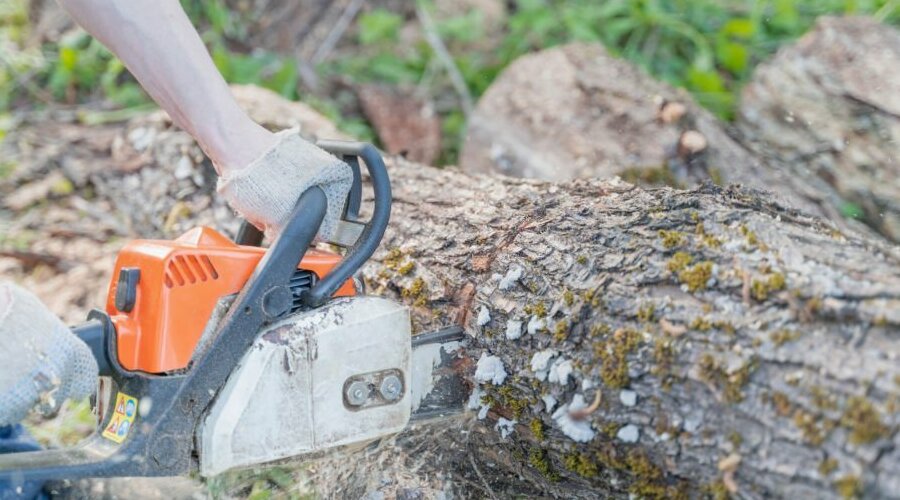Common Mistakes to Avoid When Doing DIY Tree Removal
Common Pitfalls to Watch Out for
Has that old tree in the backyard become a thorn in your side?
Maybe it’s just too big, blocking your sunlight, or it’s starting to look a little wonky and you fear the next storm might bring it crashing down.
So, you’re considering doing what many people are which is going DIY with your tree removal.
However, expert arborists advise some caution here.
Attempting to handle such an immense task on your own could potentially lead to damaging outcomes if not done correctly for both you and the environment.
That’s why we’re here. To guide you through those common mistakes many homeowners make when tackling DIY tree removal.
Pro Tip
We strongly recommend hiring professionals for any substantial tree removal projects. We’re skilled experts armed with appropriate equipment and knowledge of all potential hazards involved. However, should you still choose DIY hunt, below are handy tips compiled from years of experience in aiding avoidable blunders experienced by DIY enthusiasts just like you.
1. Lack of Knowledge and Planning
Rushed decisions or lack of preparation can lead to costly errors when it comes to DIY tree removal. Each tree is unique, with specific ways it should be cut and removed. Bypassing this vital step could mean property damage or even personal injuries if the falling healthy tree isn’t properly controlled.
2. Inadequate Safety Measures
You wouldn’t ride a bike without a helmet, safety glass, or safety gear, or climb a ladder without someone holding it steady, right? The same rules apply to tree removal. Perhaps you’re so focused on getting the job done that safety precautions slip your mind. Yet, a simple act like wearing gloves and safety goggles could save you from serious harm.
3. Using Incorrect Tools
Using your trusty old handsaw might seem like a good idea until you’re halfway through a 20-inch thick trunk. The right tools such as chainsaws, wedges, and ropes make all the difference in how smoothly a job goes and its ultimate success. An ax might work for smaller branches but industrial-strength saws are needed for thicker trunks. Tree removal also requires equipment such as cranes, wood chippers, and chain saws.
4. Overestimating Physical Capability
Taking down a tree is more strenuous than it might seem at first glance. It’s not just cutting. It involves hours of hauling and disposing of logs and branches. If you’re not in shape or have pre-existing health concerns, this task can take a serious toll on your body.
5. Failure to Assess Tree’s Health Properly
The thing about trees sick enough for removal is, that they’re often unpredictable: rotten patches could make parts weaker than others or the tree may be structurally unstable. A failure to correctly assess the tree’s condition could lead to misjudgments over where the tree will fall or how it should be cut down.
6. Ignoring Power Lines
Nothing amps up danger levels during a DIY project like mixing large falling objects with electricity. It can lead to electrocutions or fires. Always check if there are power lines within falling distance of your tree and call in professional assistance if there are.
7. Improper Felling Technique
Tree felling isn’t as simple as just chopping away. If done incorrectly, the tree may not fall where you want it to or fall in a way that’s hard to control. An improper cut can make things go sideways quickly, making it dangerous like tree stumps, tree trunks, and tree roots.
8. No Clear Escape Route
Just like firefighters have a pre-planned escape route out of burning buildings, you too should have an evacuation path when downing trees. If something unexpected happens, such as a tree falling the wrong way, having preplanned escape routes helps avoid accidents.
9. Dropping Trees onto Other Objects
It’s equally important to assess your surroundings like buildings, fences, and even smaller plants can all be damaged by a falling tree. Gauge the drop zone correctly to ensure no objects lie in harm’s way.
10. Cutting the Wrong Branches First
The order in which branches are cut affects how much control you have over its fall direction. Cutting from the top down is key for safety and if done incorrectly, could lead to uncontrolled falls and subsequent damage.
FAQs
Will hiring an arborist harm my trees?
On the contrary, hiring a professional ensures that your trees receive excellent care. This is from pinpointing diseases to performing safe pruning techniques that don’t damage the tree.
Can I use a power line clearance crew to prune my trees?
The clearance crews are primarily not equipped with knowledge regarding tree health hence it might lead to serious deformations or growth problems within your trees over time
Are some tree species more prone to disease than others?
Yes, indeed. Certain types of trees are more susceptible to specific diseases or pests than others—an aspect where arborists’ expertise proves invaluable.
Conclusion
Tree removal might sound like a straightforward weekend project but can quickly turn treacherous if you’re not careful.
Mistakes can be costly and potentially dangerous, but most importantly, they’re avoidable.
Yes, doing it yourself might save some cash, but weigh this against the potential risks to your safety and property.
Armed with the tips above from experts, you’re now better equipped to take on this task thoughtfully and safely.
But remember, if in doubt or face-to-face with a particularly challenging tree, call in the professionals.



